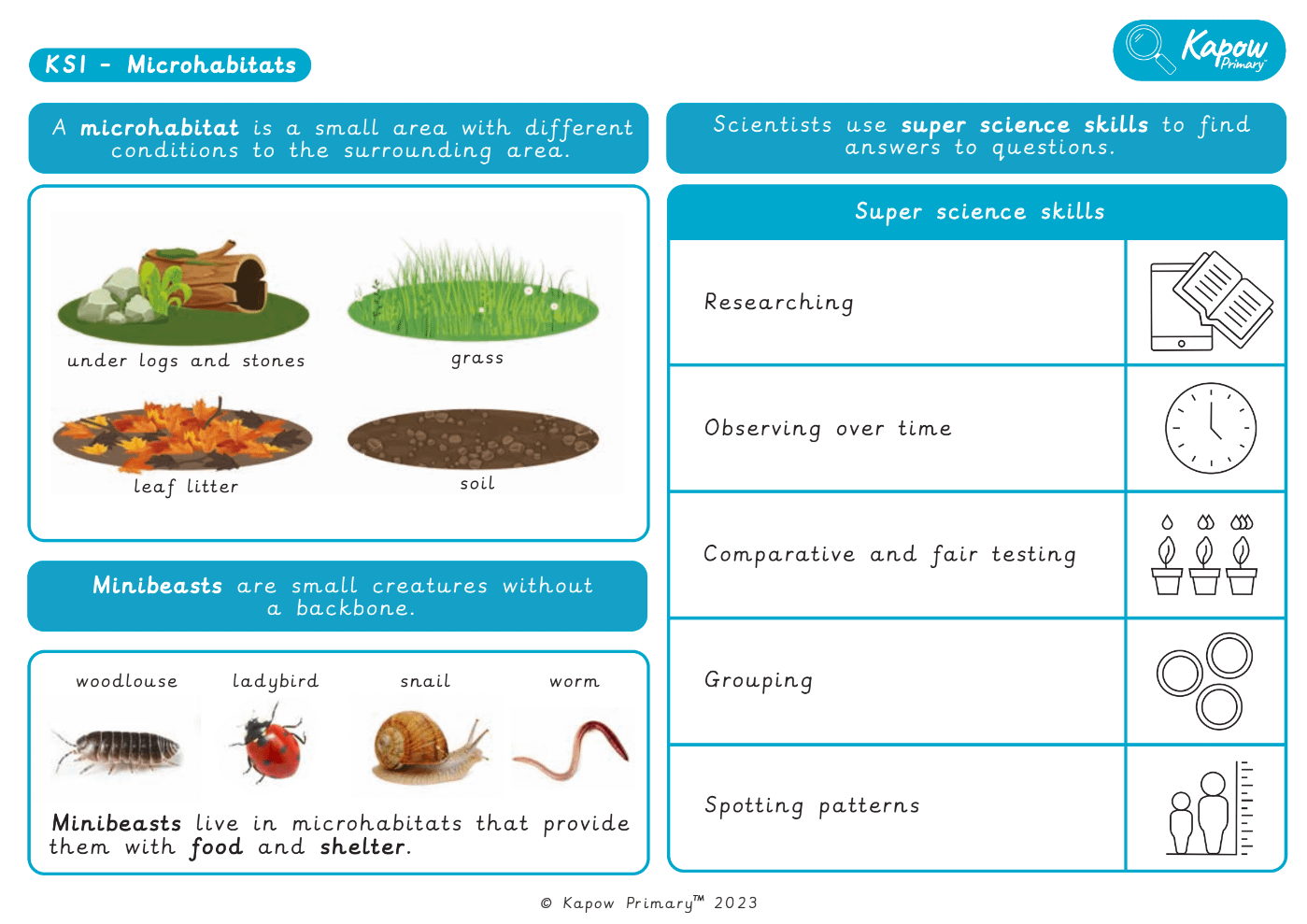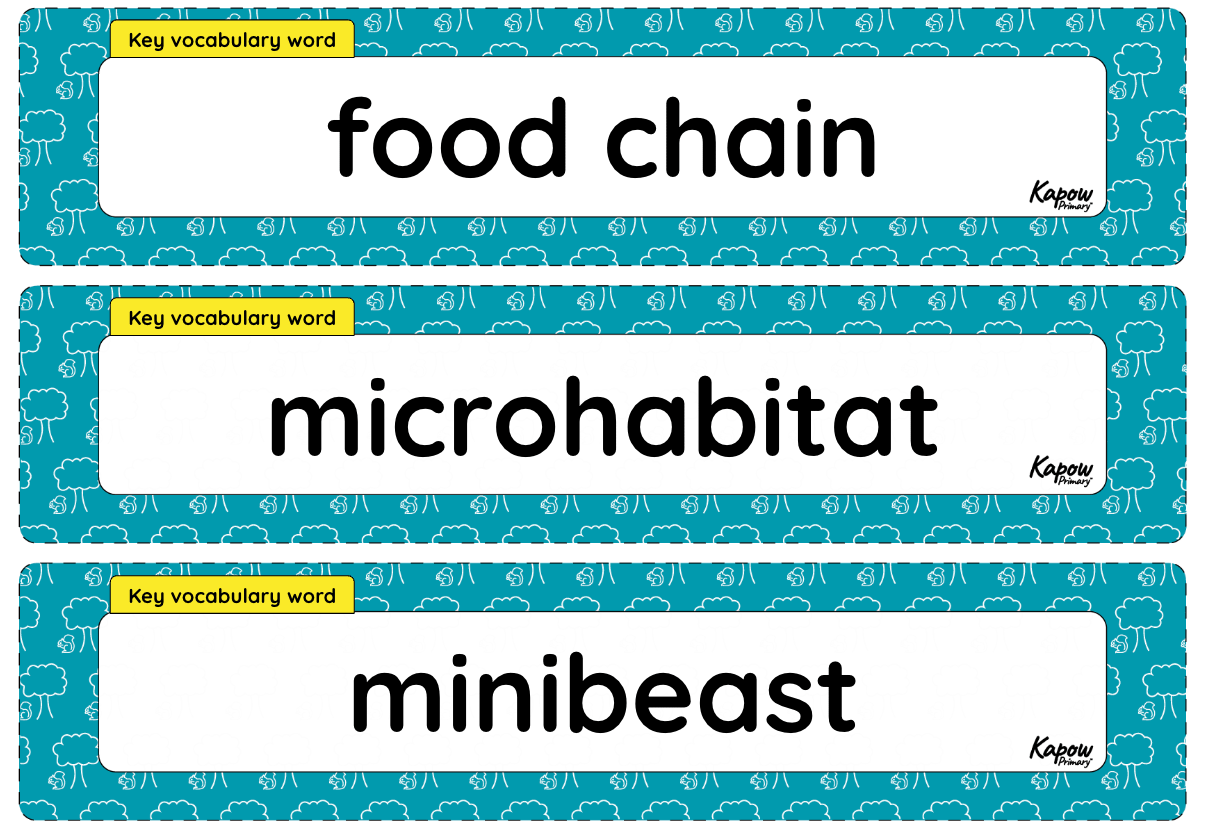Living things: Microhabitats
Asking questions about minibeasts and using scientific enquiry methods to find answers.
The Curriculum and Assessment Review final report has been released. We’re reviewing the recommendations and planning for future updates. Learn more
- Subjects >
- Science >
- Key stage 1 >
- Year 2 >
-
Living things: Microhabitats
Unit outcomes
Pupils who are secure will be able to:
- Identify and name a variety of plants and animals.
- Recall that minibeasts live in microhabitats.
- Describe microhabitats and their conditions.
- Describe how microhabitats provide for the basic needs of animals and plants.
- Describe the job role of a botanist.
When working scientifically, pupils who are secure will be able to:
- Group minibeasts and create simple classification keys.
- Ask questions and recognise that they can be answered in different ways.
- Gather and record data and use it to answer questions.
- Plan what observations to make in an experiment.
- Order the steps of a method.
- Describe the appearance of flowering plants.
- Use an identification chart to name flowering plants.
Please note that Kapow Primary Science lessons are designed to be 1 hour and 30 minutes long to reflect the requirements of a core subject.
Suggested prior learning
Living things: Habitats
Get startedLessons
Lesson 1: Identifying and classifying minibeasts
Working scientifically
- To classify a variety of minibeasts.
Lesson 2: Introduction to scientific enquiry
Working scientifically
- To recognise how scientists answer questions.
Lesson 3: Minibeast hunt
Knowledge
- To recognise that living things live in habitats to which they are suited.
Working scientifically
- To gather and record data to answer a question.
Lesson 4: Planning an experiment
Working scientifically
- To ask questions and plan how to carry out an experiment.
Lesson 5: Woodlice experiment
Working scientifically
- To carry out an experiment and record data in a table.
Lesson 6: What is a botanist?
Knowledge
- To identify a variety of flowering plants.
Science in action
- To understand the role of a botanist.
Key skills
Key knowledge
Related content
Unit resources
Cross-curricular opportunities
English: Reading – comprehension; Writing – vocabulary, grammar and punctuation.
Geography: Geography skills and fieldwork.
British values: Mutual respect.



